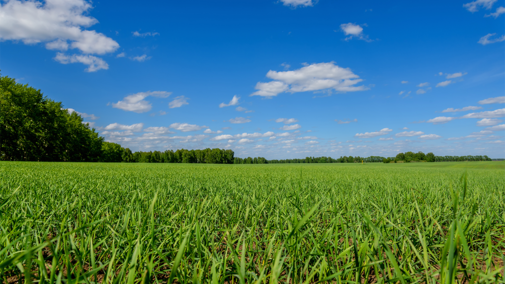Taking Stock
By Ben BeckmanToo much cold and snowy weather can make even the most eager winter enthusiast look forward to spring. Once we dig out and are able to catch a breath, taking some time to review last year can help us when looking ahead to 2024.
How is your hay stockpile looking at this point in the winter? We really want to avoid having to purchase more this late in the game to make it to spring, but if that is the case, how can we avoid it next year? If we decide to raise our own, annual forages can provide a quick yield. If this problem keeps occurring, maybe expanding grass or alfalfa acres is worth consideration.
Speaking of perennial fields, how did they yield last year? Is it time to renovate grass or alfalfa hayground? If we need to tear out an old alfalfa stand to give a year’s rest before a new seeding, we need to start planning now. Even planning to interseeding a grass field with legumes should happen quickly.
Maybe a full renovation isn’t needed, but some fertilization to boost yield would help. Plan for soil sampling if it hasn’t already been done in the fall and figure out timing of applications now. Remember not all plants grow at the same time of year, so the timing of fertilizer needs to be matched with your predominant species.
Finally, as we get closer to the tax deadline, it’s worth looking at the overall financial standing of your forage operation. Is new equipment needed? Can the costs be justified? We might even weigh the pros and cons of producing hay ourselves vs. buying it or having it custom harvested. This isn’t limited to the balance sheet, but labor, scheduling and quality of forage all need to be considered.
While we might not appreciate the hardships, winter brings time to take stock of our current operations and plan for the future. Looking at current hay stocks, last year’s yields, and weighing out all options available may not be a task we look forward to, but it can make a huge difference in success for the upcoming year.
Planning for Spring Annual Forages
By Jerry VoleskyWhile we are still early in the new year, it is time to start thinking about any spring annual forages that we might plant. Part of the process may be anticipating a need for extra feed or booking seed early for possible discounts.
For spring or cool-season annual forages, the planting period is typically late March to early April, or when soil temperatures are in the 42- to 45-degree range. Oats are probably the most common cool-season annual forage planted in Nebraska. However, spring triticale or spring barley are two other small grain options that have been found to perform similarly to oats in terms of forage yield and quality.
Also similar is the number of days until ready to begin grazing or hay, so the different species could be mixed if desired. One could look at seed cost of the different species before making a decision. With the early spring planting date of the cool-season annuals, grazing can typically begin around the third or fourth week of May and last into early July. Haying usually take place around the third week of June.
If grazing is a primary goal, Italian ryegrass could be included in a mix with the cereal grains, and this will result in a longer grazing period. Field peas are another species that could be included to enhance forage quality and provide some nitrogen fixation.
Remember to consider the herbicides that may have been used on a field the previous year. Some herbicides may have long residuals that could hinder establishment even into this spring.

